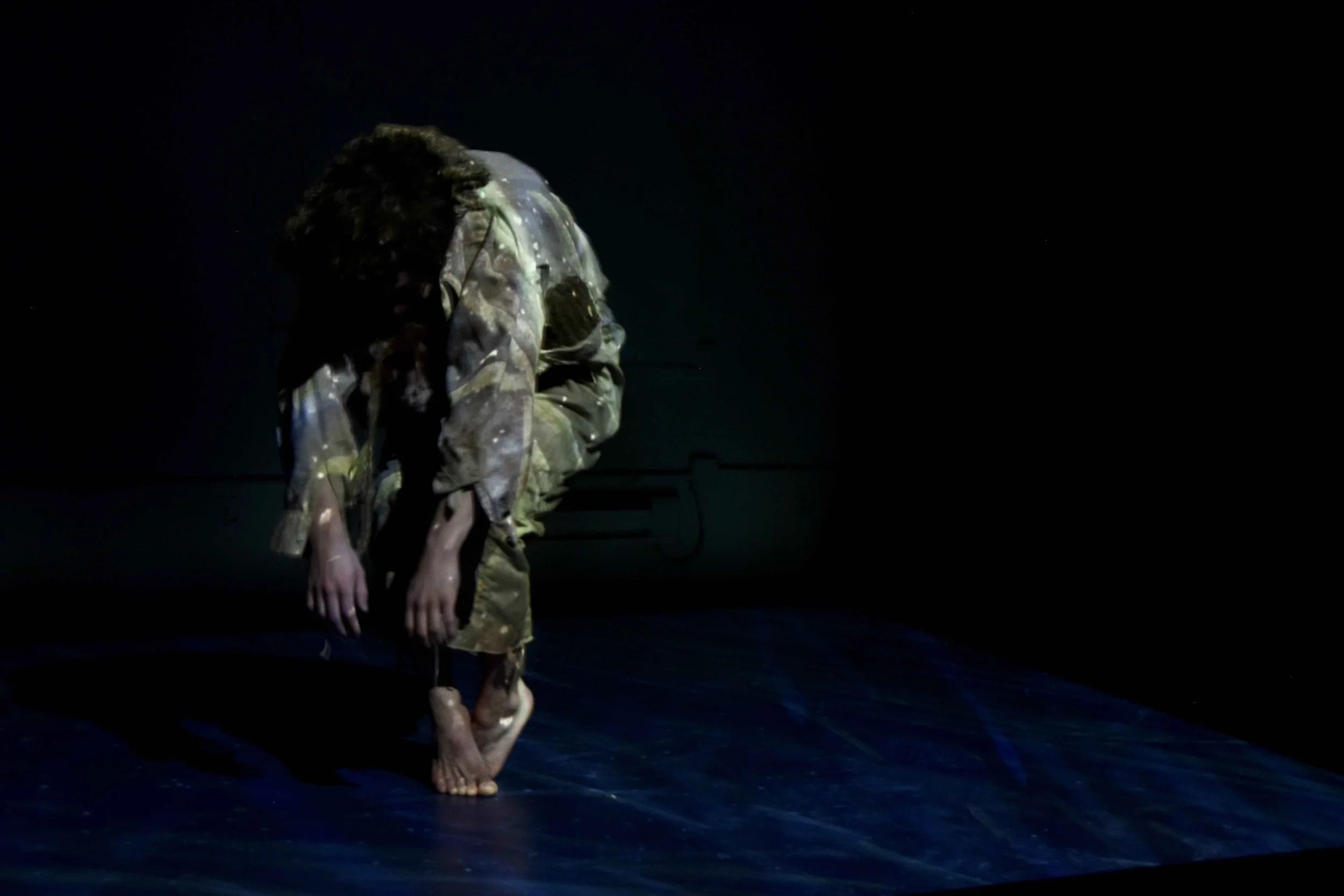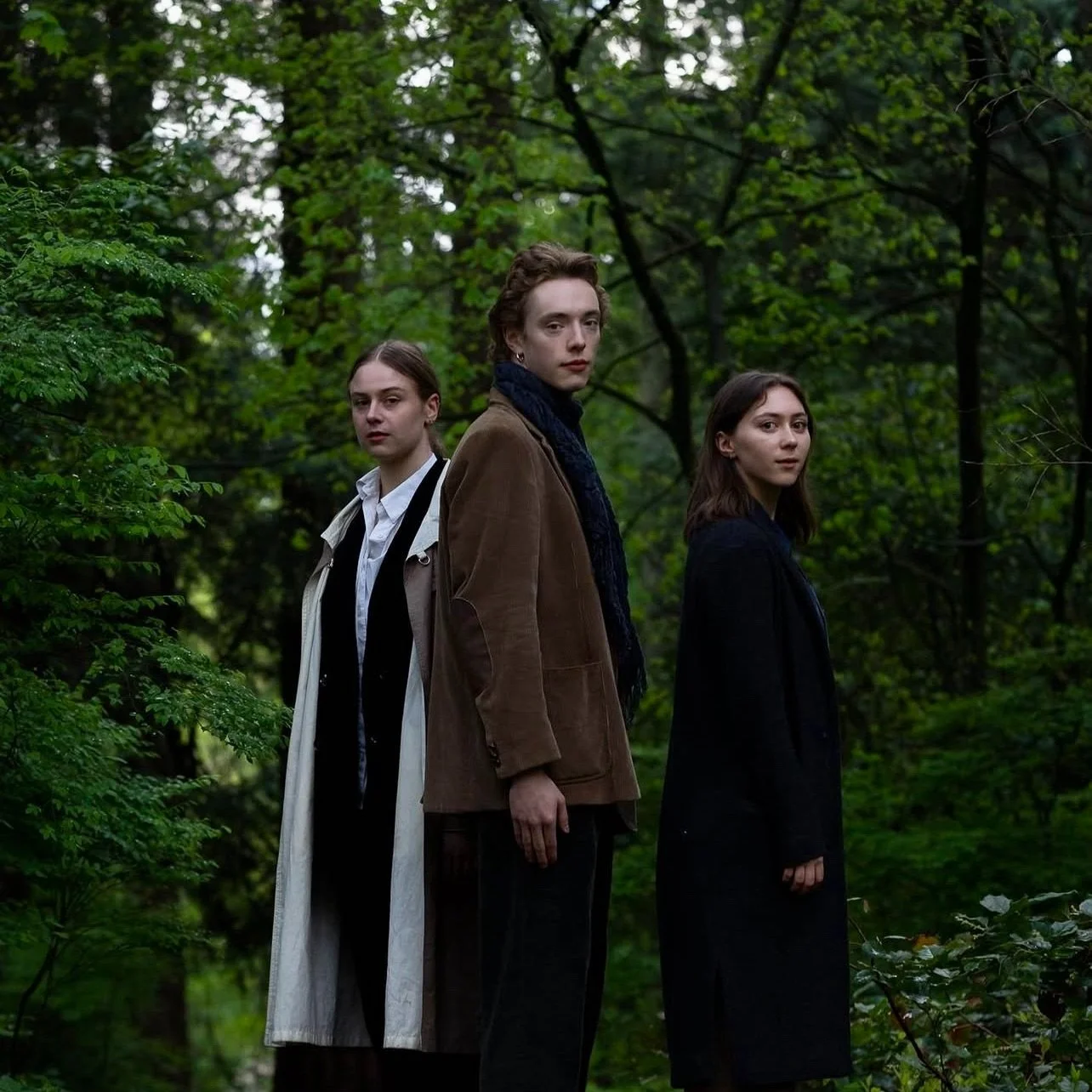Catherine Gaudet turns minimalism into mechanical repetition with Les jolies choses (The Pretty Things)
In DanceHouse presentation of Montreal-based choreographer’s latest ensemble work, simple moves create feelings of restriction
Les jolies choses (The Pretty Things). Photo by Donatas Ališauskas
DanceHouse presents Compagnie Catherine Gaudet’s Les jolies choses (The Pretty Things) at the Vancouver Playhouse on November 22 and 23 at 8 pm
WHEN MONTREAL-BASED dance artist Catherine Gaudet entered the studio in October 2020 to begin choreographing what is now Les jolies choses (The Pretty Things), she had no concrete plans—but she did have a desire to explore minimalism.
Guided by her usual process of intuitive creation, she worked with five dancers to attempt telepathy, testing whether they could communicate sensations with each other while staying still and quiet. Eventually, that method of conveying feelings led to the development of a few seemingly simple moves that were capable of imparting strong emotions.
In Les jolies choses, the dancers repeat those basic moves over and over again as though they’re cogs in a machine. Accuracy is crucial as they chug through doll-like sequences of right-angled arms and on-the-spot jumps, complexified by ever-changing formations and counts. All that repetition creates overarching feelings of oppression, compliance, and restriction for viewers, who watch on as the dancers are forced to keep pace.
Suddenly, notes Gaudet, what started as a piece grounded in minimalism spiralled into something much more nuanced.
“For me, the repetition is to acknowledge the multiple cycles that we are cut into,” the choreographer tells Stir over Zoom before her own Compagnie Catherine Gaudet’s hotly anticipated DanceHouse debut on November 22 and 23. “We wake up in the morning, we go back to sleep in the evening, and we have to eat at very specific hours during the day, you know? We are born, and then we die, and then the cycle of life continues. So for me, it’s something beautiful in a way.
“But I think that when we get older in age,” she continues, “we can feel those cycles more like a routine that we are caught into, and feeling that we are caught into these multiple routines can make us forget the magnificence of life. I think it’s at that point that the cycles are ambiguous. You can see them as something super marvellous that represents the mystery of life, or you can really feel that you are stuck in those cycles, and you are stuck in life. So I think it’s not something wrong or right, but it depends on the way you manage these cycles.”
Touring to the Vancouver Playhouse, Les jolies choses is a feat of artistry and athleticism that requires mathematical precision. Outfitted simply in neutral unitards, the dancers appear on-stage in a line that is constantly turning on itself as it moves through space. Within that line, each individual dancer is also rotating on an axis, meaning they have to match two angles at once. On top of that, the traditional eight-count is swapped out for ever-changing sequences counted in four, 12, and even 16 beats, which makes for an ever greater challenge.
Even the smallest of errors, says Gaudet, is immediately obvious to the audience—so the pressure is certainly on for dancers Dany Desjardins, Caroline Gravel, Leïla Mailly, James Phillips, and Scott McCabe. (Desjardins—a long-time collaborator of Gaudet’s—stepped in to replace one of the original collaborators from 2022, Francis Ducharme.)
“The piece looks like a big machine where they are all struggling really hard to do the performance,” Gaudet says. “They have to be all together turning. It’s really important that they don’t miss a step, so they are calling to each other, counting to each other, to help make this machine work. We say that the dancers are kind of stuck in this huge, big machine that imprisons them in a way; but also they are this machine, and they make it function. So we have, I think, in the piece, this impression of the dancers being oppressed. They have to obey this machine, but in the end, they can also rip everything out and find their freedom.”
Catherine Gaudet. Photo by Julie Artacho
Gaudet has explored the concept of repetition before in works like the five-dancer L’affadissement du merveilleux (French for “the fading of the marvellous”), which takes a more hypnotic, trancelike approach to cycles; and the solo piece Se dissoudre (meaning “to dissolve”), in which she unpacks methods of amalgamating, like stirring sugar into a cup of tea.
The choreographer describes the simple-yet-meticulous style of Les jolies choses as postmodern contemporary dance, which is emphasized by an equally minimalistic soundtrack from Antoine Berthiaume. Soft and dreamy at first, the music calls to mind the meditative compositions of Philip Glass, interjected with looping rhythms that mimic the dancers’ repetition. Then, all of a sudden, there’s a wild shift toward the second half of the work as heavy-metal music blares over the speakers.
“In the music and in the piece, it’s as if we are stretching an elastic—stretching it, stretching it, stretching it—and at the end, we let it go,” Gaudet says.
In watching the trailer for the show (see below), it’s clear that all the repetition, or “stretching”, takes a serious amount of stamina from the dancers. But conceptually speaking, exhaustion isn’t a big player in the piece.
“It’s a huge, huge performance that the dancers have to do,” Gaudet acknowledges. “But at first I was really not interested, and I’m still not super interested in feeling the fatigue of the dancers. For me, it’s not the point. But I like to see that they are on a mission, and they have to do it more as a ritual. I relate it a lot with sport: they have to do this performance. They have to use this amount of energy to create a space where their consciousness will be shifting, and they will be able to reach a state of ecstasy, just like you can have when you’re running a marathon or doing different types of sports.
“But for me, and for us—I will talk for the dancers as well, because we created the piece really all together—with the amount of energy, it’s true that they feel that they reach a second stage in the performance,” the choreographer continues. “At the beginning, they’re like, ‘How will I be able to perform that?’ And in the middle of the piece, they start to feel this energy coming from really far inside them that elevates them. So for us, it was not about the fatigue, really. We consider it more as a ritual to reach a state of epiphany.” ![]()


























